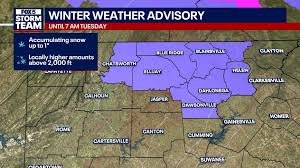
Imagine a clear sky suddenly turning ominous, followed by a startling barrage of ice that can range from pea-sized pellets to golf-ball giants. This isn’t a scene from a sci-fi movie; it’s the raw power of a hailstorm. While beautiful in its formation, hail is one of nature’s most destructive weather phenomena, capable of causing billions in damages annually. But what exactly is hail, how does it form, and most importantly, how can you protect yourself and your property when the sky decides to rain ice?
The Science of Hail: How Icy Pellets Form
At its core, hail is a form of solid precipitation that consists of balls or irregular lumps of ice. Unlike sleet, which is frozen raindrops, hail develops within powerful thunderstorms known as supercell storms. The process is fascinatingly complex:
- Updrafts are Key: Strong updrafts within a cumulonimbus cloud (a towering, dense cloud involved in thunderstorms) lift water droplets far above the freezing level.
- Supercooled Water: These droplets become supercooled, meaning they remain liquid even at temperatures below freezing.
- Icy Nucleus: A tiny ice crystal or dust particle acts as a nucleus, attracting these supercooled droplets, which then freeze onto it.
- Growth by Accretion: The embryonic hailstone is tossed around by turbulent updrafts and downdrafts. As it travels, it collects more supercooled water droplets and freezes, growing layer by layer, much like an onion.
- Too Heavy to Hold: Eventually, the hailstone becomes too heavy for the updrafts to support, and it falls to the Earth as hail. The stronger the updraft and the longer the hailstone remains suspended, the larger it can grow.
The Destructive Power of Hail: More Than Just Ice
While a light sprinkling of small hailstones might seem harmless, larger hail can be devastating. Sizes vary from a pea to a grapefruit, and the impact can be severe:
- Vehicle Damage: Dents, shattered windshields, and broken mirrors are common casualties, leading to costly repairs.
- Property Damage: Roofs, siding, and windows of homes and businesses are highly vulnerable. Roofs can suffer impact damage, leading to leaks and structural issues.
- Agricultural Ruin: Crops are extremely susceptible to hail damage, with large hailstorms capable of wiping out entire fields in minutes, causing significant economic losses for farmers.
- Personal Injury: Though rare, large hailstones falling at high speeds can cause serious injuries to people and animals caught outdoors.
Staying Safe and Protecting Your Property During a Hailstorm
Preparedness is your best defense against the unpredictable nature of a hailstorm. Here’s how to stay safe and minimize damage:
Personal Safety Tips
- Seek Immediate Shelter: If you’re outdoors and a hailstorm hits, find sturdy shelter indoors as quickly as possible.
- Stay Away From Windows: Windows can shatter from the impact of large hailstones. Move to an interior room or basement.
- Protect Your Head: If caught outside with no immediate shelter, use your arms, a bag, or anything available to protect your head and neck.
Safeguarding Your Assets
- Vehicles: Park cars in a garage or under a carport if possible. If not, consider investing in a car cover specifically designed for hail protection. If driving, pull over safely and seek sturdy shelter. Do not drive through a severe hailstorm.
- Homes: Regularly inspect your roof and gutters. After a hailstorm, document any damage with photos and contact your insurance company promptly. Consider hail-resistant roofing materials if you live in a hail-prone area.
- Gardens/Crops: For small gardens, temporary covers or tarps can offer some protection.
Hailstorms and a Changing Climate
The relationship between hailstorms and climate change is a subject of ongoing scientific study. Some research suggests that while the overall frequency of hailstorms might not drastically change, their intensity and the size of hailstones in certain regions could increase due to warmer atmospheric conditions contributing to stronger updrafts in thunderstorms. Staying informed about local weather patterns and predictions is always crucial.
Conclusion: Be Prepared, Not Scared
Hail, with its stunning formation and potential for destruction, serves as a powerful reminder of nature’s might. By understanding how these icy projectiles form, recognizing their potential impact, and taking proactive steps to ensure safety and protect property, you can mitigate the risks associated with severe hailstorms. Stay informed, stay prepared, and respect the power of the sky.




